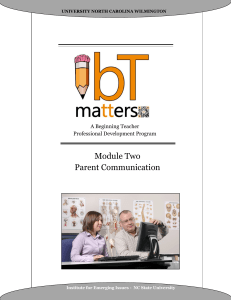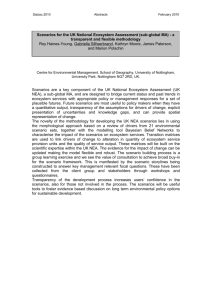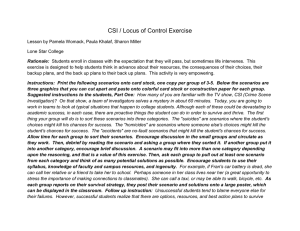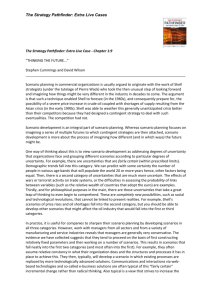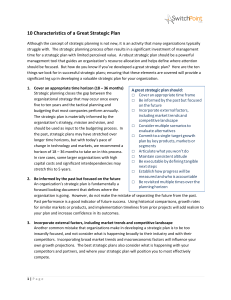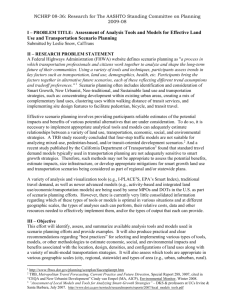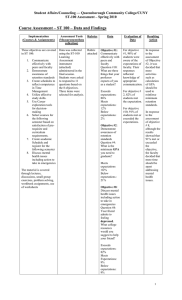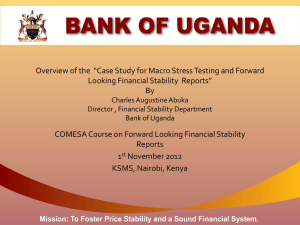Planning and Decission Making
advertisement
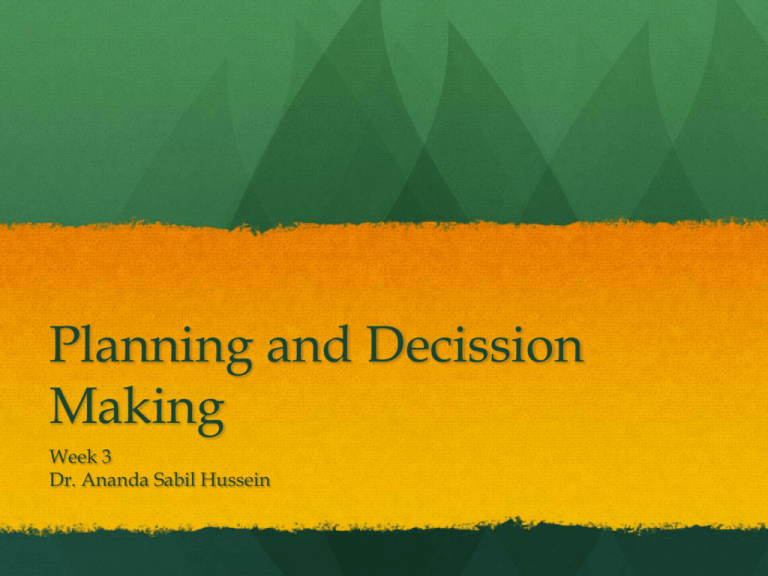
Planning and Decission Making Week 3 Dr. Ananda Sabil Hussein Steps in Planning Choose goals Identify actions Allocate responsibility Review Performance Make adjustments Levels of Planning Business-level strategic plan (heads of businesses) Operating plans (heads of functions) Unit plans (heads of departments, teams, individuals Shaped by input from Sets the context for Corporate-level Strategic plan (CEO) Types of Plans Strategic plans: A plan that outlines the major goals of an organization and the organizationwide strategies of attaining those goals. Operating plans: Plans that specify goals, actions, and responsibility for individual functions. Tactical plans: The action managers adopt over the short to medium term to deal with a specific opportunity or threat that has emerged. Unit plans: Plans for departments within functions, work teams, or individuals. Types of Plans Single-use plans: Plans that address unique events that do not reoccur. Standing plans: Plans used to handle events that reoccur frequently. Contingency plans: Plans formulated to address specific possible future events that might have a significant impact on the organization. Crisis management planning: Plan formulated specifically to deal with possible future crises. Scenario planning: Plans that are based on “what if” scenarios about the future. Scenario Planning Formulate plans to deal with those futures Switch strategy if tracking of signposts shows alternative scenarios becoming more likely Invest in one plan but … Hedge your bets by preparing for other scenarios and … Question Can scenario planning apply and be useful to you as a student? Explain. Develop three scenarios for your postgraduation future and possible plans to deal with them. Scenario Planning Traps Treating scenarios as forecasts Failing to make scenarios global enough in scope Failing to focus scenarios in areas of potential impact Treating scenarios as informational only Not using an experience facilitator Source:www.valuebasedmanagement.net The Strategic Planning Process Feedback External analysis (opportunities and threats) Mission, vision, values, and goals SWOT analysis formulate strategies Draft action plans Review progress against plan Implement Internal analysis (strengths and weaknesses) Assign subgoals, roles, responsibilities, timelines, and budgets Setting the Context: Mission, Vision, Values, and Goals Mission: The purpose of an organization. Vision: A desired future state. Values: The philosophical properties to which managers are committed. Goals: A desired future state that an organization attempts to utilize. Mission Checklist Ends, not means Brevity Effort Broad vs. narrow Verbs Value added Nouns embodying activities Unique The Unidentifiable Source: raise-funds.com Characteristics of Goals They are precise and measurable. They address important issues. They are challenging but realistic. They specify a time period in which they should be achieved. 10 Ingredients for Successful Goals Specific Measurable Simple Tangible Significant Written Strategic Shared Rational Consistent with your values Source:www.topachievement.com The Benefits of Planning Planning gives direction and purpose to an organization; it is a mechanism for deciding the goals of the organization. Planning is the process by which management allocates scarce resources, including capital and people, to different activities. Planning drives operating budgets-strategic, operations, and unit plans determine financial budgets for the coming year. Planning assigns roles and responsibilities to individuals and units within the organization. Planning enables managers to better control the organization. Countering the Pitfalls of Planning Pitfall Solution Too centralized; top-down Decentralized planning Failure to question assumption Scenario planning; devil’s advocate Failure to implement Link to goals; tie to budgets Failure to anticipate rivals’ actions Role-playing The Rational Decision-Making Model Identify the problem Identify decision criteria Weight criteria Generate alternative courses of action Implement alternative Choose one alternative Does not meet expectations Meets expectations Evaluate outcome Continue with course of action Bounded Rationality and Satisficing Bounded rationality: Limits in human ability to formulate complex problems, to gather and process the information necessary for solving those problems, and thus to solve those problems in a rational way. Satisfice: Aiming for a satisfactory level of a particular performance variable rather than its theoretical maximum. Decision-Making Heuristics and Cognitive Biases Decision heuristics 80-20 rule Cognitive bias Prior hypothesis bias 80-20 Rule Performing in your 20 percent if you’re: Engaged in activities that advance your overall purpose in life Doing things you have always wanted to do not what others want you to do Hiring people to do the tasks you are not good at or don't like doing. Smiling. Source: Family Practice Management, September 2000 Improving Decision Making Devil’s advocacy: The generation of both a plan and a critical analysis of the plan by a devil’s advocate. Dialectic injury: The generation of a plan (a thesis) and a counterplan (an antithesis) that reflect plausible but conflicting courses of action. Outside view: Identifying a reference class of analogies past strategic initiatives, determining whether those initiatives succeeded or failed, and evaluating a project at hand against those prior initiatives.
